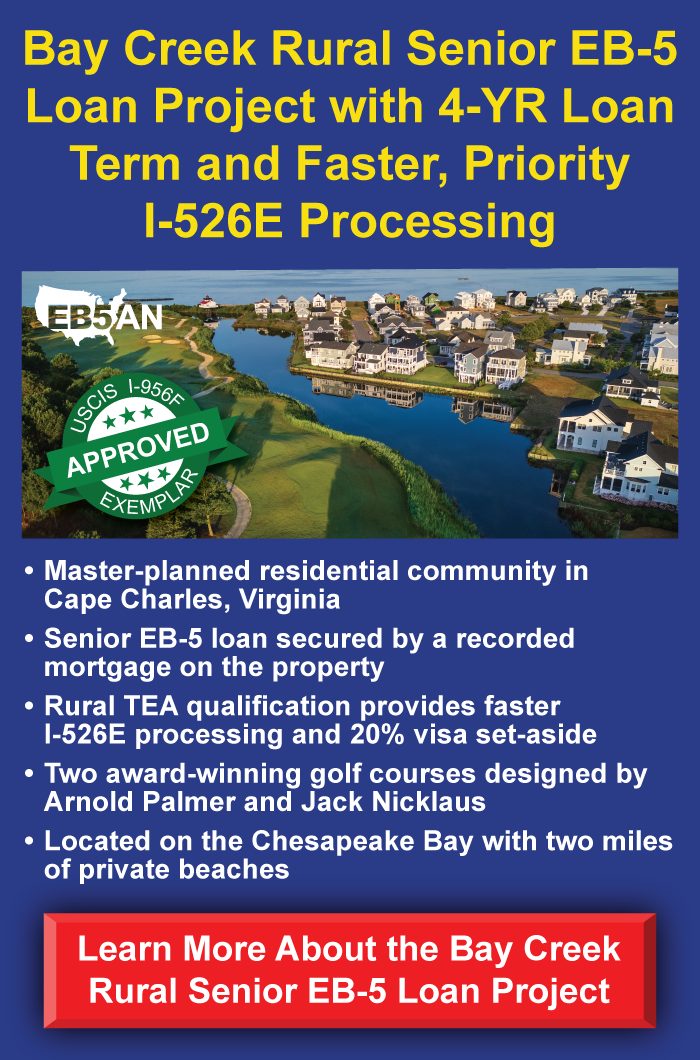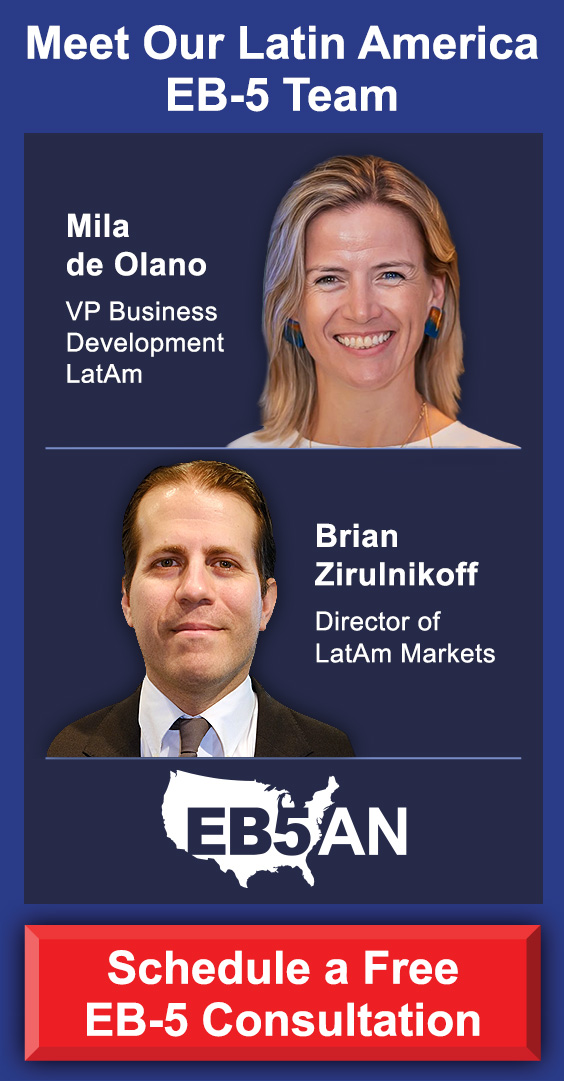Are you a current or aspiring medical doctor who dreams of starting a new life in the United States?
If so, you’re not the only one. A number of doctors worldwide have made this move. The potential for higher earnings, better working conditions, a desirable educational and cultural environment, and a pathway to U.S. lawful permanent residency or citizenship have drawn many foreign physicians to the United States.
However, those who want to pursue new opportunities in the United States face challenges. They have only a limited number of visa options to choose from. Each pathway has limited visa availability. Figuring out which route is the best fit for your immigration plans can be difficult. Some doctors think that only nonimmigrant visas or immigrant visas that require international recognition are the only options available.
Luckily, there is a better choice. It has provided a reliable and straightforward pathway to U.S. lawful permanent resident status for decades.
It’s the EB-5 Immigrant Investor Program.
In this article, we’ll discuss practicing medicine in the United States, the U.S. visa options available to foreign national doctors, and how you can make an investment that gives you the best odds of becoming a Green Card holder.
How to Legally Practice Medicine in the United States
- Step 1: Verify Educational Qualifications
- Step 2: Receive ECFMG Certification
- Step 3: Take the United States Medical Licensing Examination
- Step 4: Complete a U.S. Medical Residency Program
- Step 5: Obtain a Medical License in a U.S. State
- Step 6: Apply for Employment or Start Your Own Practice
- Additional Considerations
What U.S. Visas Are Available for Doctors?
The EB-5 Visa Lets You Live and Work Anywhere in the United States
Why Foreign Doctors Might Prefer EB-5 Regional Center Investments
- Passive Investment
- Simplified Job Creation
- Less Time and Operational Burden
- Lower Risk of Compliance Issues
- Geographic Flexibility
EB5AN Helps Foreign Doctors Get Green Cards
How to Legally Practice Medicine in the United States
Foreign physicians who want to legally practice medicine in the United States should be ready for a complex process that includes the following steps.
Step 1: Verify Educational Qualifications
Eligible foreign doctors should have degrees from accredited graduate medical education programs. Their medical degree should be recognized by the Educational Commission for Foreign Medical Graduates (ECFMG), and their accredited medical school should also be listed in the World Directory of Medical Schools.
If they are, great—proceed with the next steps. If not, you may need to pursue additional training or education at a recognized institution.
Step 2: Receive ECFMG Certification
Before you can apply for residency, you must obtain ECFMG certification. Some people mistakenly refer to this as the Foreign Medical Graduate Examination, but it is a process, not an exam.
This requires passing USMLE Step 1 and Step 2 CK, plus completing one of the approved ECFMG Pathways, which includes the OET Medicine English exam. Certification confirms that your medical education meets U.S. standards.
Step 3: Take the United States Medical Licensing Examination
You will need to pass all three steps of the United States Medical Licensing Examination (USMLE). This is a series of exams developed by the National Board of Medical Examiners that assess whether a doctor is qualified to practice medicine in the United States. You must have strong oral and written English language skills to pass.
The exams will test you on the following:
- Step 1: Understanding of basic medical sciences.
- Step 2: Clinical knowledge.
- Step 3: Ability to provide unsupervised medical care.
Register for the USMLE exams through the ECFMG if you’re an international medical graduate (IMG). There is no separate medical examiners examination.
Step 4: Complete a U.S. Medical Residency Program
After obtaining ECFMG certification and passing the Step 1 and Step 2 exams, you must complete a U.S. residency program (which is a specific type of clinical training program), even if you have already completed one in your home country. This entails applying for a residency program through the National Resident Matching Program (NRMP). Residency programs can range from 3-7 years, depending on your specialty. You may need to apply for an appropriate nonimmigrant visa at this stage, if you aren’t already pursuing a Green Card option.
Step 5: Obtain a Medical License in a U.S. State
Once you have completed your residency, you will need to apply for a medical license in the state where you want to practice. Contact the state medical board where you plan to practice for the specific licensing requirements and begin the application process.
Each state has its own licensing requirements, which usually include:
- Completing a set number of years of residency training.
- Passing Step 3 of the USMLE.
- Providing documentation to prove that you have completed a residency program.
Step 6: Apply for Employment or Start Your Own Practice
Once you have obtained your medical license, you can begin practicing medicine in the United States. You will need to find an appropriate job, such as at a hospital, assisted living community, scientific institution, clinic, or private practice, or you can start your own practice (though the latter will require additional business and legal considerations).
Look for job opportunities or set up your own medical practice by following the necessary procedures to establish a business and comply with regulations in your state.
Additional Considerations
- Visa Status: As a foreign national physician, you must ensure that your visa status (e.g., J-1, H-1B, or other work visas) is valid throughout the process.
- English Proficiency: You must have adequate prior education in English. If you are not a native English speaker, you may need to prove proficiency in English, as U.S. medical practice requires strong communication with patients and colleagues.
- Specialties and Fellowships: If you wish to specialize in a particular area, you will need to apply for a fellowship after completing your residency. Fellowships can last 1-3 years, depending on the specialty.
- State-Specific Requirements: Some states may have additional requirements, such as specific training programs or exams.
What U.S. Visas Are Available for Doctors?
Foreign medical doctors may be eligible to receive a variety of U.S. visas, including J-1, H-1B, O-1, TN, E-3, EB-1, EB-2, and EB-5. Each visa category has distinct eligibility requirements, benefits, restrictions, and application procedures.
Let’s take a closer look at the main options that are available, focusing on what’s most relevant to foreign-born physicians.
We’ll start with nonimmigrant visas.
Nonimmigrant (Temporary) Visas
J-1 Visa (Exchange Visitor Program)
Foreign medical graduates who are seeking U.S. clinical training (residency or fellowship) through an accredited program can obtain a J-1 non-immigrant visa.
The J-1 visa allows recipients to participate in graduate medical education or training under ECFMG (Educational Commission for Foreign Medical Graduates) sponsorship. It also lets them work in residency/fellowship programs.
The J-1 visa comes with certain restrictions. One is a two-year home residency requirement: After completion, physicians typically must return to their home country or country of last legal permanent residence for two years before applying for an H-1B, L-1, or Green Card. In addition, they cannot moonlight or work outside the training program.
However, the J-1 visa requirement for a foreign doctor to return to his or her home country can be waived by an interested government agency under certain programs if the doctor agrees to work in a medically underserved area of the United States.
If an alien physician seeks to extend their stay in the United States, there are two main waiver pathways:
- Conrad 30 Program (administered at the state level).
- Health and Human Services (HHS) Waiver Program, which is administered directly by the federal agency HHS.
The HHS J-1 Waiver Program is specifically for primary care or research physicians who are willing to work in HHS-designated shortage areas and will commit to three years of full-time service.
The main J-1 visa application requirements are as follows:
- USMLE Steps 1 and 2.
- ECFMG certification.
- Acceptance into ACGME-accredited residency/fellowship.
- DS-2019 form issued by ECFMG.
- Proof of home country ties (non-immigrant intent).
A Training Program Liaison (TPL) will submit official requests and supporting documentation to ECFMG on behalf of the foreign doctor for J-1 visa sponsorship.
Foreign doctors on a J-1 visa do not have to pass a Visa Qualifying Examination (VQE) anymore; this requirement was discontinued in the 1990s.
H-1B Visa (Specialty Occupations)
Doctors with a U.S. medical license who are employed in a specialty occupation can obtain an H-1B visa. To be approved for this visa, an applicant must demonstrate that they have a body of highly specialized knowledge, among other requirements. Eligible occupations are usually clinical roles requiring at least an MD or the equivalent.
This visa allows holders to:
- Work in clinical positions (including residencies/fellowships in some cases).
- Change employers with a new petition.
- Pursue legal permanent residence status (dual intent), including via an EB-5 Green Card.
The H-1B visa also comes with certain restrictions, which include the following.
- Subject to an annual cap (unless employer is cap-exempt, e.g., university hospitals).
- Requires sponsorship by a U.S. employer.
- Limited to six years (up to three years initially + a 3-year extension).
Successful applicants must complete and receive the following:
- USMLE Steps 1, 2, and 3.
- State medical license or eligibility.
- Job offer from a U.S. employer.
- Labor Condition Application (LCA) from the Department of Labor.
O-1 Visa (Individuals With Extraordinary Ability)
Doctors with demonstrated national/international acclaim in medicine or research may receive an O-1 visa.
The O-1 visa allows foreign doctor recipients to work in the United States in a position related to their extraordinary ability (clinical, research, or academic). They can choose between multiple employers if approved.
Restrictions on an O-1 visa holder include the following:
- Must continue work in the area of extraordinary ability.
- Requires extensive documentation to demonstrate extraordinary ability.
- No cap; renewable indefinitely in 1-year or 3-year increments.
Successful applicants must have the following:
- Evidence of sustained acclaim (publications, awards, memberships, etc.).
- Advisory opinion from peer group or professional organization.
- Employer or agent as petitioner.
TN Visa (Canada and Mexico Only)
Canadian or Mexican physicians may come to the United States to work in pre-approved professions under the TN visa, in accordance with the United States-Mexico-Canada Agreement (USMCA).
A TN visa allows a recipient to teach or conduct research. They can be approved to work in the United States quickly and renew this visa indefinitely. However, the “physician” role under a TN visa is restricted to occupying a teacher, researcher, or comparable research position, and excludes direct patient care.
To be approved, an applicant must provide the following:
- Proof of medical degree and license.
- U.S. job offer describing non-clinical duties.
- Evidence of Canadian/Mexican citizenship.
E-3 Visa (Australia Only)
Australian nationals in specialty occupations (including clinical roles like physicians) are eligible to receive an E-3 visa.
This allows recipients who are sponsored by a U.S. employer to work in the United States in a clinical setting. Their spouses can work too.
However, this visa is reserved exclusively for Australians. It is renewable in 2-year increments and requires a Labor Condition Application.
To be approved, an applicant must have the following:
- U.S. job offer.
- USMLEs and state licensure.
- E-3 visa interview and documentation of qualifications.
Immigrant (Permanent Residency) Visas
A medical doctor from a foreign country can also receive a U.S. immigrant visa. This includes the following options.
EB-1 (Employment-Based First Preference)
Foreign doctors with extraordinary ability, who are outstanding researchers/professors, or who occupy senior positions at major institutions are eligible to receive an EB-1 visa.
This allows recipients to apply directly for a Green Card without receiving PERM labor certification. In certain cases, applicants may self-petition.
The EB-1 visa is not easy to obtain and few people can meet the application requirements. An applicant must show sustained national/international recognition—such as an internationally recognized award or publication of scholarly articles that demonstrate significant contributions—to be approved. In addition, applicants from some countries usually face long wait times.
To be approved, an applicant must have the following:
- Comparable evidence similar to that required by an O-1 visa (publications, citations, outstanding achievements like internationally recognized prizes, etc.).
- Employer sponsorship (except for EB-1A self-petitioners).
- I-140 petition + adjustment of status or consular processing.
EB-2 (Employment-Based Second Preference)
A foreign doctor who has an advanced degree or exceptional ability may receive an EB-2 visa. Physicians who intend to work in underserved areas can also be approved under a more streamlined application process via a National Interest Waiver (NIW).
The EB-2 visa allows foreign doctors to apply for a Green Card with or without employer sponsorship (the latter via a NIW). Approved applicants may work in the United States indefinitely.
The NIW requires five years of service in a Health Professional Shortage Area (HPSA), Medically Underserved Area (MUA), or Department of Veterans Affairs (VA) facility. A standard EB-2 visa requires PERM labor certification, unless the requirement is waived.
To be approved, an applicant must fulfill the following criteria:
- U.S. medical degree or equivalent.
- U.S. medical license.
- If NIW: evidence of work in public interest, support letters, and service agreement.
- I-140 petition + I-485 adjustment of status (if in the United States).
Summary of Non-Immigrant and Immigrant Visas for Foreign Medical Doctor Applicants
| Visa Type | For Whom | Clinical Work Allowed? | Employer Sponsorship | Key Restrictions |
| J-1 | Residency/Fellowship trainees | Yes | Required | 2-year home return unless waived |
| H-1B | Licensed physicians, some trainees | Yes | Required | 6-year limit, cap-subject |
| O-1 | Extraordinary ability physicians | Yes | Required | Must work in area of ability |
| TN | Canadian/Mexican citizens | No | Required | Only teaching/research |
| E-3 | Australian physicians | Yes | Required | Australians only |
| EB-1 | Top-tier physicians/researchers | Yes | Optional | Very high standards |
| EB-2/NIW | Advanced degree/underserved area | Yes | Optional (NIW) | 5-year service for NIW |
Each of these visa types is a viable pathway to living and working in the United States, but there’s another pathway that you should consider.
The EB-5 Visa Lets You Live and Work Anywhere in the United States
The EB-5 Immigrant Investor Program is a U.S. immigrant visa program that allows eligible foreign nationals to receive a U.S. Green Card by investing in a qualifying U.S. business that creates jobs for American workers. It’s an attractive option for professionals, including physicians, who desire flexibility and a reliable pathway to lawful permanent residence in the United States.
EB-5 Visa Requirements
A foreign national who wishes to obtain an EB-5 visa must fulfill several requirements.
Ordinarily, they must invest a minimum amount of $1,050,000. However, if they choose to invest in a rural or high-unemployment project located in a targeted employment area (TEA), they become eligible for a lower minimum investment amount of $800,000. The investor must provide documentation that proves the funds were obtained legally.
An applicant must also invest in a new commercial enterprise (NCE), which is generally a for-profit U.S. business established after 1990. This investment can be made directly or through a regional center approved by United States Citizenship and Immigration Services (USCIS).
The investment must create or preserve at least 10 full-time jobs for U.S. workers within a reasonable timeframe. Regional centers allow indirect job creation to count toward this requirement.
EB-5 Visa Benefits
An EB-5 visa holder can expect to receive the following benefits.
1. Live and Work Anywhere
- Doctors can live and practice medicine anywhere in the United States.
- You’re not tied to a specific employer, hospital, or location as you would be with an H-1B or J-1 visa.
- It’s great for physicians who want to work in private practice, rural areas, or even start their own clinics.
2. Avoid Nonimmigrant Visa Restrictions
- The EB-5 Green Card bypasses many employer- and residence-related requirements, as well as work and travel restrictions that typically accompany nonimmigrant visa categories.
- EB-5 applicants can have immigrant intent from the start without jeopardizing their eligibility.
- Once you receive permanent residence through EB-5, you are not required to return to your home country at any stage.
3. Bring Your Family
- Your spouse and unmarried children under 21 also receive Green Cards.
- Your spouse can work legally.
- Children can attend public schools or universities as residents, which may reduce tuition costs significantly.
4. No Need for Sponsorship
- Unlike H-1B or certain other employment-based Green Cards, no employer sponsorship is needed.
- You control the process, not a teaching hospital or institution.
- It’s ideal for doctors wanting more autonomy and fewer employment constraints.
5. Pathway to U.S. Citizenship
- After holding a Green Card for five years, you can apply for U.S. citizenship.
- You’ll gain full citizenship rights that include voting, expanded job opportunities, the ability to run for political office, enhanced travel benefits, and expedited sponsorship of relatives for Green Cards.
Why Foreign Doctors Might Prefer EB-5 Regional Center Investments
Nearly all EB-5 investors choose to invest via regional centers instead of making direct investments. Doctors often choose EB-5 regional centers for convenience, lower risk, and to stay focused on their medical careers.
Here are some of the advantages that come with a regional center investment.
Passive Investment:
- Regional centers allow doctors to invest without managing a business.
- This is ideal for physicians focused on medical practice, not running a company.
Simplified Job Creation:
- Regional centers can count indirect and induced jobs (e.g., construction, services), not just direct hires.
- This makes it easier to meet the 10-job requirement.
Less Time and Operational Burden:
- No need to handle day-to-day operations, paperwork, or employees.
- You can concentrate on preparing for U.S. medical licensing or residency.
Lower Risk of Compliance Issues:
- Regional centers are structured to meet EB-5 criteria.
- This reduces the risk of your visa being denied due to non-compliance with program rules.
Geographic Flexibility:
- Since you’re not tied to your investment’s location, you can live and work anywhere in the United States.
EB5AN Helps Foreign Doctors Get Green Cards
If you’re a current or aspiring medical doctor, you’ve decided to dedicate much of your life to helping others. Let the professionals at EB5AN help make your dream of practicing medicine in the United States a reality.
EB5AN has helped more than 2,700 families from 70+ countries relocate to the United States as lawful permanent residents. Our expert team has more than a decade of experience, and offers clients first-rate, low-risk EB-5 regional center projects with 100% USCIS project approval rate to date.
To find out more about how foreign medical doctors can become EB-5 Green Card holders quickly and reliably, book a free call with us today.













